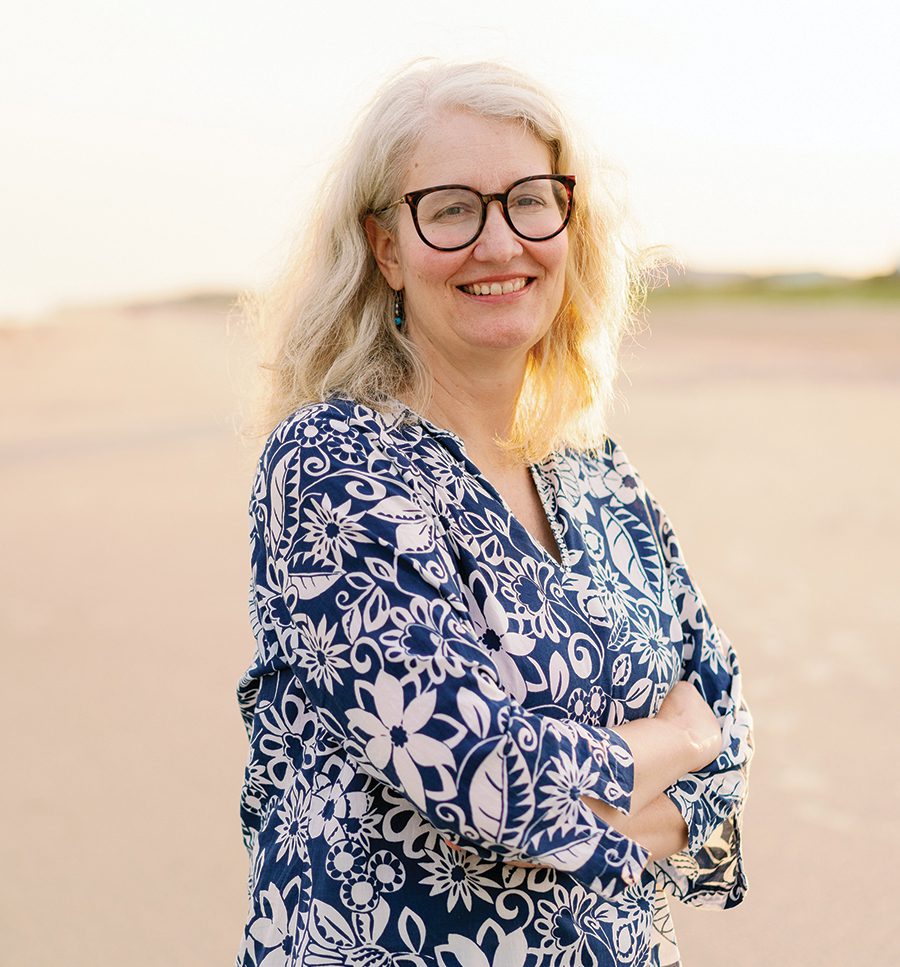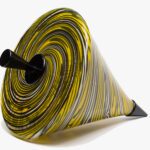One Charlotte woman’s breast cancer journey
October 1, 2021
Former SouthPark Editor Leigh Dyer shares her experience.
by Leigh Dyer
The phone call last spring caught me off guard: Following a mammogram and ultrasound that had found suspicious images, the results of my first biopsy were back. “You have a form of cancer …” began the woman’s voice on the other end. Despite my knowledge that this happens to one in eight women, I’d been in denial that it could happen to me.
I’m happy to report that my breast cancer was caught early, and I have received excellent care at Atrium Health Levine Cancer Institute. As I write this, I am two weeks away from finishing radiation treatments. That follows my second biopsy, two MRIs, genetic counseling, chemotherapy consultation, a second opinion, two surgeries and several integrative-medicine appointments. Radiation is the final step of treatment.
Before this happened, I’d done my share of reading about breast cancer — risk factors, prevention tips, the latest studies on mammograms and treatments, and so forth. But it struck me throughout my journey how far the research on breast cancer has progressed, with some advances being relatively recent.
So I wanted to pass along some of the information I found most useful over the last six months in hopes it might be helpful to others — whether you’re seeking to lower your own risk or if you or someone you love is coping with a similar diagnosis.

Check your sources.
I’ll start with the first piece of advice I received during that first phone call: Wanting to do a lot of reading on this topic is natural. But you’ll want to spare yourself a lot of credible-sounding sources who cite dubious science. Start with the American Cancer Society (cancer.org) and the National Cancer Institute (cancer.gov), and if you find a tip elsewhere that isn’t repeated at one of those two sites, you’ll want to check it with your health care provider.
Don’t skip those mammograms.
I had a variety of excuses for not getting mammograms as often as my doctors recommended, most recently because of the pandemic. Following my diagnosis, I beat myself up for skipping a mammogram, wondering if I had blown it by not doing the one easy thing that was within my control. Ultimately, mine was caught at a lucky time — my cancer was invasive, but it was still very early. If I’d let it go another year or two, it could have been a much scarier story. So, if the takeaway is that at least one woman out there decides to catch up on her mammograms, telling this story will be worthwhile.
Find a cancer mentor.
I’m so very grateful to the many (too many) women I know who’ve been through this journey before me. Their knowledge and perspective have been so helpful. (In general, this is a time of intense gratitude to all the friends and family who have been so supportive). My only caution might be to double-check any medical information that sounds surprising from another woman’s experience, especially if her diagnosis was more than a couple of years ago. You never know what might already be out of date. If you don’t know a survivor to reach out to, Levine Cancer Institute offers free support groups.
Update your weight-loss advice.
Looking to shed that “quarantine 15” but lacking motivation? That was me. May I suggest “avoiding cancer” as a pretty powerful motivator? Studies surprisingly show that premenopause, having a few extra pounds might be OK — but only a few, as obesity is a risk factor. However, once you hit menopause, losing even a small number of pounds can lower your risk. A recent study from the NIH found that losing as little as 4.5 pounds post-menopause lowered the risk of breast cancer by 18%, while the risk reduction was even greater in those who lose 10 to 20 pounds or more, and keep them off long term.
Exercise — duh.
In the least surprising news ever, getting the recommended 150 to 300 minutes of moderate-intensity physical activity per week lowers your risk. I’ve enjoyed the opportunity to try new activities — both tai chi and qigong are recommended for breast cancer survivors, and free video introductions are plentiful on YouTube and elsewhere. For cardio without increasing any of the discomforts that come along with cancer treatment, I have found a recumbent exercise bike helpful.
Try integrative medicine.
My oncological surgeon referred me to an integrative specialist, who was covered by my insurance and became a resource for advice on nutrition, supplements, exercise, meditation, sleep habits/insomnia and other forms of healing such as reiki (three free “healing touch” appointments are available to all Levine Cancer Institute patients). If I’d needed chemotherapy, she would have had plentiful advice for managing the side effects — fortunately, though, chemotherapy was not recommended in my case.
Lower your environmental risk.
Lots of scary news articles warn about environmental factors that might increase your risk of cancer, and it can be overwhelming. I was grateful when my integrative specialist told me about the Environmental Working Group, which issues consumer guides on everything from household cleaners to personal-care products to food. I chose some EWG-certified products for things I put directly onto my skin, such as sunscreen. (ewg.org).
Some brief wardrobe advice.
Bamboo fabric pajamas are a miracle invention, with antibacterial, moisture-wicking and cooling properties. The natural-fiber garments are pricey, and you have to check brands for sustainable manufacturing processes, but when your skin’s going through a lot of punishment between surgeries and radiation treatment, I found they are worth every penny.
Do your diet research.
You’ll find a lot of sometimes-conflicting dietary advice out there, but my specialist agreed the best solution for me is the Mediterranean diet (also ranked as the No. 1 “healthiest diet overall” in U.S. News & World Report rankings). I was already halfway there following a family vacation to Greece in 2019. It struck me as the most promising for long-term success because it does not completely forbid any major food group — and you’re even permitted the occasional glass of wine at dinner (sorry, but more than one glass per day is a risk factor).
This part was actually fun, if any part of this experience can be called fun. Three cookbooks I’ve found helpful: The 30-Minute Mediterranean Diet Cookbook (Ball & Segrave-Daly, Rockbridge Press); The Mediterranean Diet Weight Loss Solution (Stassou, Rockbridge Press); and The Cancer Diet Cookbook (Detraz, Rockbridge Press).
Below, I share a couple of my favorite recipes.
SIMPLE GREEK SALAD
I’m one of those who don’t like having too many “extra” salad greens remaining after all the toppings are eaten, so an authentic Greek-style salad appeals to me. I’ve thrown together a version of this almost daily with whatever appropriate ingredients I have on hand.
Ingredients:
1 small green bell pepper, chopped
1 small or Persian cucumber, chopped
1 medium tomato, chopped
Approx. ½ tbsp. olive oil (I just eyeball it as I drizzle straight from the bottle; it’s hard to go wrong)
Approx. ½ tbsp. balsamic or red wine vinegar
Freshly ground black pepper and coarse salt, to taste
Crumbled or cubed feta cheese, to taste
Pitted kalamata olives, to taste
Directions:
Mix all ingredients. It’s fine to serve this on a bed of salad greens if preferred, but the Greeks eat it just like this. If you like crushed garlic or thinly sliced red onions, throw some in. It’s even better after it marinates for about 30 minutes, and leftovers can keep a day or so in the fridge. I enjoy topping it with a dollop of hummus.
EASY SHRIMP SCAMPI (serves 3-4)
I was so relieved to find recipes for this popular favorite listed in weight-loss cookbooks. The Mediterranean diet is heavily plant-based, but occasional seafood (and less frequent poultry or red meat) are permitted. This can be served with whole-grain pasta or lightly sauteed zucchini “zoodles.”
Ingredients:
2 tbsp. olive oil
1 shallot or small onion, minced
1 pound fresh medium shrimp, peeled & deveined
6 cloves minced or crushed garlic
Juice of 1 lemon
Zest of 1 lemon
½ cup dry white wine
½ tsp. Kosher or sea salt
¼ tsp. freshly ground black pepper
Pinch red pepper flakes
¼ cup chopped fresh parsley
Directions:
Heat oil in a large skillet over medium-high heat and cook the shallot or onion about 5 minutes, until soft.
Add the shrimp and cook 3 to 4 minutes, stirring occasionally, until the shrimp is pink.
Add the garlic and cook 30 seconds, stirring.
Stir in the lemon juice, zest, wine, salt, pepper and red pepper flakes. Bring to a simmer and reduce heat, cooking for about 2 minutes until liquid reduces by about half.
Remove from heat and stir in the parsley. SP
Leigh Dyer was editor of SouthPark Magazine from 2008-2011. She now works in communications and can be found on Twitter and Instagram @editorleigh.





